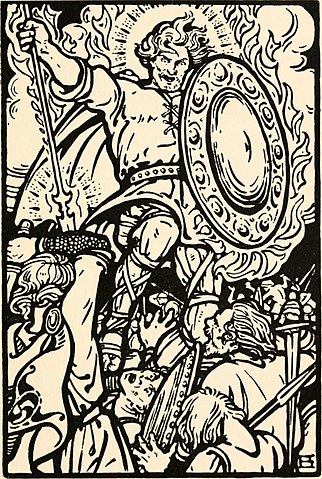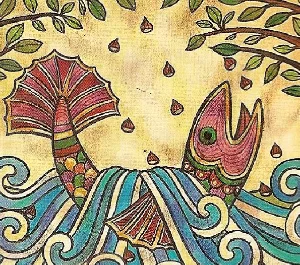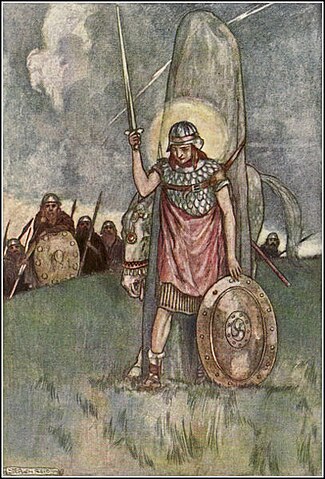What is the Fenian Cycle?
Introduction to the Fenian Cycle
Ireland is famous for its rich tapestry of myths and legends. One of the most celebrated groups of tales forms what is known as the Fenian Cycle—also called the Fianna Cycle. These stories revolve around the legendary hero Fionn mac Cumhaill (often anglicised as Finn MacCool) and his band of loyal warriors, the Fianna.
Before we delve into the details, it’s helpful to note that Irish mythology is generally divided into four main cycles: the Mythological Cycle, the Ulster Cycle, the Fenian Cycle, and the Cycle of Kings. Each cycle has its cast of heroes, villains, and extraordinary adventures. But the Fenian Cycle, in particular, offers a fascinating blend of heroism, romance, and even trips to magical realms.
Table of Contents
Historical and Cultural Background

The Fenian Cycle has its roots in an oral tradition, meaning that generations of storytellers told these stories aloud long before they were written down. Later, medieval monks and scribes recorded many of these tales in manuscripts, such as the Book of Leinster (from the 12th century).
At its core, the Fenian Cycle illuminates early Celtic society, showcasing values like warrior culture, hospitality, and respect for nature. By reading these stories, we glimpse how people in early medieval Ireland understood heroism, loyalty, and what it meant to live in harmony with the land.
Central Characters and the Fianna
Fionn mac Cumhaill
The star of these tales is Fionn mac Cumhaill, a warrior of great wisdom and strength. Legend says he gained his wisdom by tasting the Salmon of Knowledge, an otherworldly fish said to contain all the world’s secrets. Fionn is also the leader of the Fianna, a band of skilled warriors sworn to protect the High King and the land.
The Fianna
The Fianna are celebrated for their martial prowess, loyalty, and strict codes of honour. They’re known for undertaking thrilling hunts and defending Ireland from mortal and magical threats.
Other Important Figures
- Diarmuid Ua Duibhne (Diarmuid O’Dyna): A member of the Fianna famed for his bravery and tragic love story with Gráinne.
- Oisín: Fionn’s gifted poet-son features in some of the most enchanting tales, including a journey to the Land of Youth called Tír na nÓg.
Major Stories and Adventures

The Boyhood Deeds of Fionn (Macgnímartha Finn)
The Boyhood Deeds of Fionn (Macgnímartha Finn) revolve around the young hero’s upbringing and trials. As a child, Fionn was raised in secrecy to protect him from rival clans. Under the guidance of wise tutors, he learned hunting, poetry, and the arts of war. One pivotal episode sees Fionn inadvertently tasting the Salmon of Knowledge, granting him extraordinary wisdom. With his newfound cunning and bravery, Fionn soon proved himself worthy of leading the Fianna, Ireland’s elite warrior band. These tales vividly portray a youth shaped by secrecy, mentorship, and destiny—ultimately forging one of Ireland’s greatest legendary champions.
The Pursuit of Diarmuid and Gráinne (Tóraíocht Dhiarmada agus Ghráinne)
Possibly the most famous Fenian tale, it involves Diarmuid, who falls in love with Gráinne—betrothed to Fionn. They flee together, pursued by an enraged Fionn, weaving a tale of love, betrayal, and destiny.
Oisín in Tír na nÓg
This magical story follows Fionn’s son, Oisín, who travels with a mysterious fairy woman to a timeless land of youth. When he returns centuries later, he finds Ireland transformed, highlighting themes of nostalgia and the passage of time.
Key Themes and Values
- Heroism and Honour: The adventures of the Fianna emphasise the importance of valour and loyalty.
- Hospitality: Feasting and generosity are recurring motifs; guests are treated with the utmost care.
- Connection to Nature: Fionn and his warriors are often depicted hunting in deep forests or sailing across shimmering lakes, showing profound respect for Ireland’s natural beauty.
- Fate and Magic: Supernatural elements, such as enchanted fish or mystical worlds, blend seamlessly with human heroism, illustrating that the line between mortal and magical realms is often blurred.
Cultural and Literary Impact

Over the centuries, the Fenian Cycle has influenced many Irish writers, poets, and scholars. Fionn mac Cumhaill remains a national icon, featuring in countless works, from traditional folk songs to modern retellings. These stories have also found their way into global pop culture, with versions appearing in children’s books, graphic novels, and fantasy literature, preserving their timeless appeal.
Suggestions for Further Reading
- Primary Texts: Look for translations of medieval manuscripts or collections of Irish myths, such as those by Lady Augusta Gregory or Jeremiah Curtin.
- Scholarly Works: Scholars like T.W. Rolleston and James MacKillop (Dictionary of Celtic Mythology) have written insightful analyses.
- Online Resources: Explore digital archives and reputable folklore websites that offer translations and discussions of Irish myths.
Conclusion
The Fenian Cycle captures Ireland’s mythical past, complete with heroic deeds, tragic love stories, and magical adventures. Fionn mac Cumhaill, the Fianna, and their exploits remain as compelling today as they were in the days of the storytellers who first shared them beside flickering fires.
These tales aren’t just entertaining—they carry forward Ireland’s cultural identity and centuries of storytelling tradition. Whether new to Irish mythology or revisiting these timeless epics, the Fenian Cycle promises a rich journey into the heart of Ireland’s legendary heritage.
Thank you for reading! If you enjoyed this post, consider sharing it with friends or exploring one of the recommended texts to discover more about the heroic world of the Fenian Cycle.
